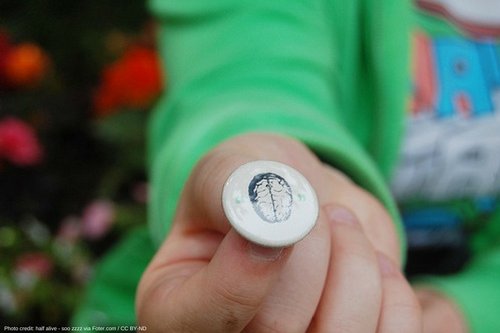Eighteen Months into Rehabilitation
I am a 50-plus, professional, reasonably athletic mother of three. I am currently 18 months into recovery from a serious accident that caused me many physical injuries, including a traumatic brain injury. I am writing about my experience as part of my therapy and hopefully to provide some context or helpful information to others who have been impacted in some way by something similar.
I do not remember the day of the accident itself or the month afterwards. As much as I am writing about what happened, it’s all second-hand from my husband. Further, if anyone had told me at the beginning (even after I regained my memory) that I would be writing a blog a year and a half later about still being in recovery mode, I am pretty certain that I would have been shocked and not have believed them.
The whole timeframe aspect of recovering from a serious accident can be hard to get your head around if you haven’t had some kind of exposure to the realities – be that through medical training or another’s experience. For a serious accident involving brain trauma that’s even more true.
In my case, the accident occurred while I was on a bike ride with my husband at the end of the summer. I was training for a charity ride to be held in a few weeks for which I would be biking 100 km/day for 3 days. We were on a rural road/highway in the Kawarthas when I was hit at high speed by an oncoming car. I was thrown from my bike, landing in the tall grass of a nearby ditch.
My husband had been riding behind me and immediately called 911, even before he ventured into the grass to find me. While I have no memory, he does — both of seeing the impact and of dealing with the immediate aftermath. I cannot even begin to imagine what it would be like to deal with having that kind of memories in my head.
Wrapping My Head Around a Severe Traumatic Brain Injury
When the ambulance arrived, they transported me to a local hospital, from which I was transferred to air ambulance and flown to Toronto. In the ICU, they did a temporary external fixation on my pelvis. A full repair surgery was done after a few days, when I had stabilized.
My main physical injuries included a fractured pelvis, femur and ankle, all on my right side. These were all immediately visible and addressed through subsequent surgery and metal implants. The impact – either of being hit initially or landing afterwards – had slammed my jaw together and it was later discovered that I had multiple cracked or chipped teeth, five of which would require root canals.
The impact had also caused a severe traumatic brain injury, despite the fact that I’d been wearing a helmet. This was apparent to others long before it was to me, as I have learned is often the case with brain injuries.
The Reality of Rehabbing
I was in the first hospital for a month and eventually moved out of ICU onto a ward. As stated, I have no real memory of that hospital. From what I’ve heard I am just as glad I don’t remember that initial period – it does not sound like it was a good time for me, or those around me. There was a lot of pain and apparently I was very vocal about it (to say there are no filters after a brain injury is putting it mildly).
I was transferred to the Toronto Rehab Institute (TRI). I do remember a new patient who arrived there after me who was very loud and foul-mouthed in his reactions to happenings around him. I had been quite shocked and expected the same reaction from my husband when he came to visit. To my surprise, he was not shocked at all, in fact, made a comment about it being a “recognized phase” after a brain injury. When I asked how he knew this, I was stunned by his comment that I had exhibited the same behaviour for a period of time at the first hospital. I’d been told that I’d been vocal – but I was *that* foul-mouthed? It was hard for me to imagine.
I was at the TRI for two months. I arrived with an air cast on my right leg, unable to move it by myself in any way. With the help of the physiotherapists there I made the progression through standing, having the cast removed, learning to use a walker, and then a cane.
I was also introduced to speech-language pathology and occupational therapy. I eventually learned that ‘occupational therapy’ is about things you do in everyday life, as well as what you do at work in your occupation – something that had really confused me initially. I couldn’t see how the sessions I was doing at the hospital were related, in any way, to what I did at the office. Since discharge I have had on-going sessions with all three kinds of therapists, as well as a social worker.
Inches Over Months
I’m now able to walk without a cane and go upstairs and down stairs without holding onto the railing. After a long weaning-off process, I am off pain medication, which was a big milestone. I remember thinking several months post-accident that I might be taking something –- even if just over the counter — forever. I am able to contribute at home – planning and preparing meals, and interacting with my teenage daughters about every day happenings and plans. Just recently I received the green light on getting my driver’s license back (it had been suspended due to the traumatic brain injury aspect of the accident).
All of this is really good news, and I realize how lucky I am. But. There is still work to do on the physical side, even acknowledging that I will not be able to pursue most activities at the level I did previously. And, because I suffer from mental fatigue and decreased stamina as a result of my brain injury, I continue to be limited when planning my days. This in turn makes my return to work and former active/busy lifestyle a challenge. Things are still improving and I am better now than I was a month ago, but I do not know how long that the improvement will continue or where I will end up. It’s eighteen months post-accident, and I am still in recovery mode.
A big helper in the physical therapy process for me was the “inches over months” perspective. My first physiotherapist was very good at keeping my attention on how far I had come since I arrived. There was little time spent on where I’d been pre-accident, or where I wanted to get to – the focus was all about what I could do now, and how that was more than I had been able to do only weeks ago.
It was like climbing a mountain and looking down to feel good about how high you had climbed so far, without ever looking up at the summit to get freaked out by how far away it still was. Having that initial mindset was a big factor that contributed to having the patience and belief to keep working over the many (many) months of physiotherapy since.
In hindsight, I think that having the physical recovery to focus on first was definitely a good thing for me. It was a distraction that provided obvious tangible things for me to work on and positive feedback when I did. I was a big believer in physical fitness before, and that’s even more the case now. I feel strongly that the physical exercises and activity I was doing on the physiotherapy side also benefitted my cognitive healing – long before I was even aware that there was cognitive healing needed.
Adding Up the One Percents
It took me forever to appreciate the brain trauma aspect of the injury. I mean, I did know pretty early that there had been an impact. And I knew that wearing my helmet had probably saved my life. In fact, I remember a doctor at TRI telling me that it absolutely had saved my life. But it was over seven months before I really started to grasp the reality of the brain injury I had experienced, after receiving the results of a neuropsychological assessment.
It wasn’t the physical injuries that were preventing me from returning to work – it was the traumatic brain injury impacts that were standing between me and the office. That was a real eye-opener. Understanding that the brain has been injured and needs time and effort to heal is much harder to grasp than understanding physical injuries, especially for an injured brain that’s trying to understand that about itself.
I am continuing to learn what ‘traumatic brain injury’ actually means, and what the cognitive impact and rehab are going to look like. Eighteen months in, it is a long and difficult journey. When things get frustrating or overwhelming, it is important to keep the faith and continue working on rehab – as long as there is progress in the right direction that is progress to celebrate. A one percent improvement now – in anything – is a one percent improvement for the rest of your life, and they can add up to a meaningful improvement for the future.
The opinions expressed in this article are those of the guest author and do not necessarily represent or reflect Propel Physiotherapy.
Read my previous posts in this series:
Written by








